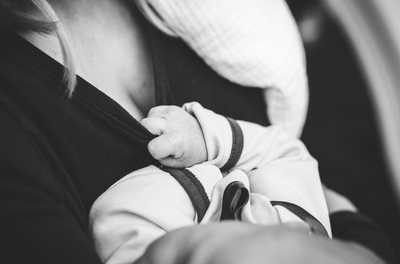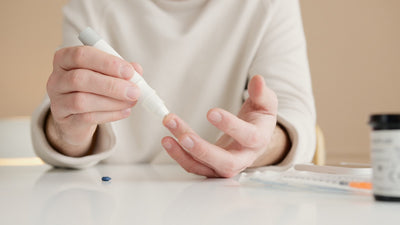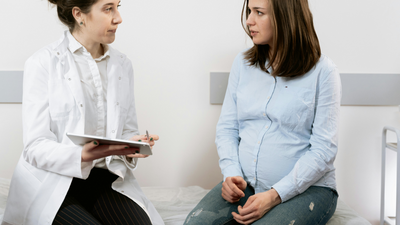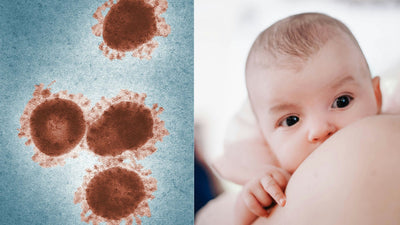Mastitis and Other Diseases Carried Through Breast Milk
Mastitis and Other Diseases Carried Through Breast Milk
By Jordan Berns
Some women have a pain-free time breastfeeding, but 10 to 33% of women experience the painful condition known as “mastitis.” Not only is mastitis uncomfortable and potentially harmful to the mother, it can increase the likelihood of vertical transmission of infection. This means that there is a heightened chance that the mother might give an illness to her baby through her breast milk.
Mastitis is when an infected, red, painful, hard spot appears in the breast because of milk statis. It can grow from a plugged duct or bacteria passing through open wounds on the breast and nipple. Mastitis often decreases the amount of milk a breastfeeding woman is able to produce. 25% of mothers stop breastfeeding early because of mastitis.
What illnesses are transmitted through breast milk?
Infections can appear in breast milk in many ways. These routes to infection include the contamination of the milk after it leaves the breast, or by damaged cells or fluid in the breast milk itself. When breast milk becomes infected, Staphylococcus aureus and Streptococcus are the most common bacteria found. Most hospital stays related to mastitis are due to Staphylococcus aureus. Some other dangerous pathogens that could be traveling in breast milk are β-hemolytic streptococci or the Pseudomonas species.
If you were to test your breast milk, you would always find some bacteria. That is totally normal! Breast milk is not sterile, so naturally there will be a little bacteria. Breast milk should have less than 104 microorganisms in fresh milk and less than 106 microorganisms in pasteurized milk. Mastitis can cause increased milk cell counts and if the infection becomes aggressive, it can lead to raised bacterial counts. If asked to take a culture of your breast milk by your doctor, see the instructions below!
How do I take a sample of my breast milk?
- Wash hands for at least 20 seconds with soap and warm water.
- Wash breasts with warm tap water and dry with a clean cloth.
- Hand express breast milk or use a breast pump flange that has been properly cleaned to help collect milk.
- Take a 3-5 mL (milliliter) sample in a leak proof, sterile container.
- Promptly take milk to the testing center in under an hour or store in a refrigerator at 39.2°Fahrenheit (4°Celsius).
What is the chance of infecting my baby when I have mastitis?
Blood-borne pathogens in breast milk may include, but are not limited to, HIV, hepatitis B, hepatitis C, West Nile Virus, cytomegalovirus (CMV), and human T-cell lymphotropic virus (HTLV-I/II). It is rare for HTLV-I/II to be transmitted to babies through breast milk except for in some areas like Africa, South America, Japan, and the Caribbean. Chances of HTLV-I/II transmission through breast milk can be lessened by decreasing the amount of breast milk the baby consumes and the time nursed. Freezing and then thawing breast milk decreases the chance of infection with HTLV-I. Similarly, freezing breast milk for 3 to 5 days at -4°Fahrenheit (-20°Celsius) decreases the chance of CMV transmission, which is especially dangerous to premature babies.
With abscesses in the breast or with clinical mastitis there is an increased risk of transmitting viral infections through breast milk. Retroviruses (a virus that uses RNA to infect a cell and make DNA copies of it to be multiplied) have a 2 to 4 times higher chance of being transmitted when the mother has mastitis. 30 to 60% of HIV-I transmitted from mother to baby are due to contaminated breast milk. With HIV-I positive mothers, the viral load of HIV-I in their milk increases 10 or 20 fold while they have mastitis. HIV-I is more likely to be transmitted through breast milk than HTLV-I/II, but there is still an increased risk factor tied to mastitis. Breastfeeding women in developing countries who have HIV and mastitis who cannot acquire safe alternatives to breast milk are recommended by UNAIDS, WHO, and UNICEF to breastfeed with only the uninjured breast.
Ask your doctor if you should keep breastfeeding while you have mastitis.
Breast milk naturally has viral and bacterial fighting properties, so most doctors recommend continuing to breastfeed with breast and nipple injuries. Usually by the time the mother realizes she has an infection, her breastfeeding baby has already been exposed. In some cases, physicians will instruct the woman to continue breastfeeding, except in some cases like with the Lassa fever (LHF). If you develop mastitis, ask your doctor if you should take a quick break from breastfeeding until the mastitis is resolved and you are feeling more comfortable.






